Choose the Right Fixative for Underpainting

Follow along as Scott Maier explores three different ways of preparing a charcoal underdrawing for an oil painting.
Is it safe to create a charcoal underdrawing for an oil painting? The general consensus is that there’s nothing inherently wrong about painting in oil on top of charcoal, although it can create somewhat of a mess without a layer of fixative to isolate the oil from the charcoal. Let’s compare three different methods for prepping a charcoal underdrawing for an oil painting: Workable Fixatif, casein fixative and PVA size.
This article originally appeared in Artists Magazine. Subscribe now so you don’t miss any great art instruction, inspiration, and articles like this one.

For this comparison, I primed cotton rag paper with acrylic gesso. After lightly sanding the surface, I created a charcoal drawing to serve as a road map for the oil painting. Dividing the image into fourths, I created vertical sections to compare each fixative application, leaving the first section untreated.

Untreated
Painting in the untreated section, the charcoal drawing lifts easily and quickly muddies the paint. The charcoal does hold better in some of the light areas where it has been smudged and worked into the surface. When glazing, scrubbing, wiping and scumbling the paint, however, the charcoal lifts easily.
Workable FixatiF
Krylon Workable Fixatif is an acrylic product that creates a fine mist when sprayed on the surface of the paper. It prevents smudging and protects from any unwanted changes during the application of the oil paint. Working in the treated area, I’m impressed by how well the charcoal stays in place. The paint adheres well as I scrape, scumble and push it around. When wiped with a paper towel, the paint lifts relatively easily to reveal the drawing underneath.

Casein Fixative
Casein fixative is a water-based product created from milk protein. It has been used by generations of artists as a safe method of preserving charcoal drawings. When sprayed, it creates larger particulates than Workable Fixatif. This is an effect I really enjoy, as it helps to break up some of the hatch marks in the charcoal drawing. It protects the drawing beautifully, with a slightly rough surface that accepts the paint well. As with the Workable Fixatif, I can easily wipe and scrape the paint to reveal the underdrawing when needed.
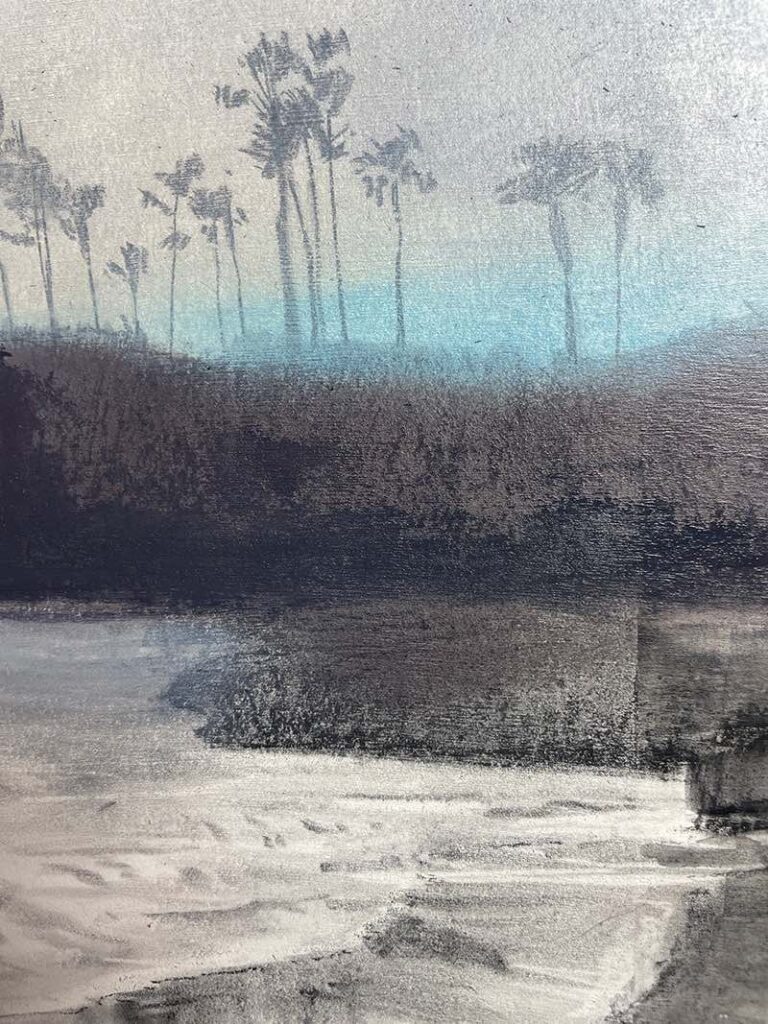
PVA Size
PVA size is not technically a fixative, but I chose to work with it in this manner to explore some brush effects in the underdrawing. When applied with a brush, it easily moves the charcoal while drying to a smooth surface that’s ready for oil painting. Although noticeably smoother than the other surfaces, it still accepts the paint well. The brush effects created are interesting, but it’s clear this method requires more deliberate brushwork and planning. It functions more as an underpainting than an underdrawing.

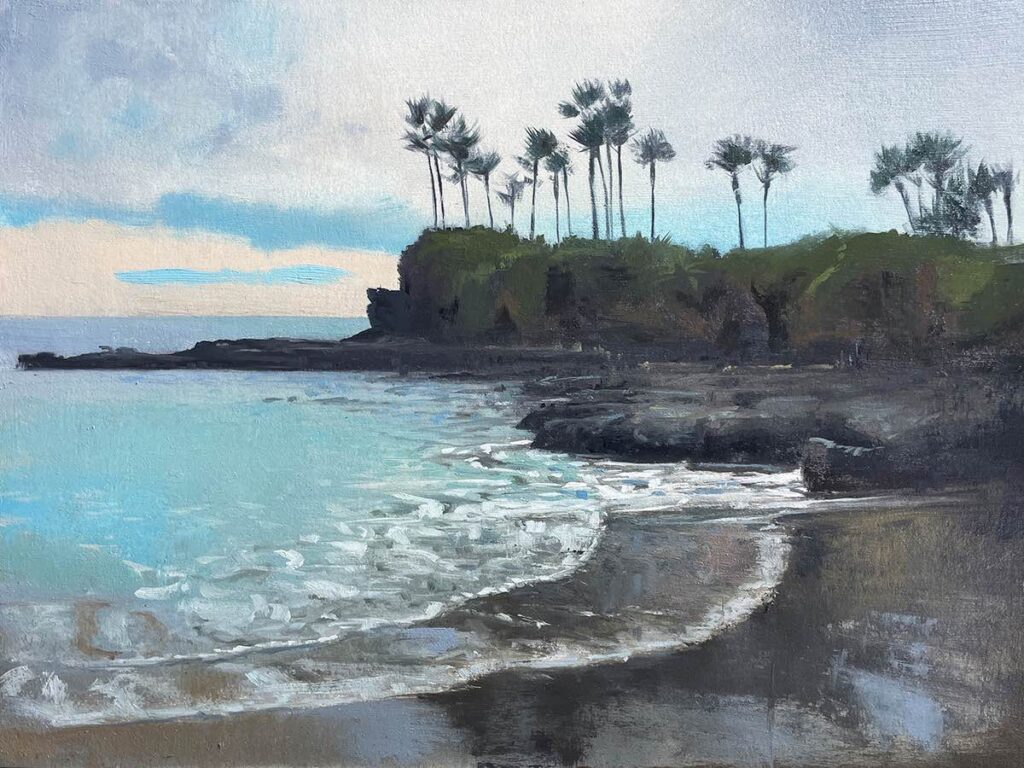
As you can see from Laguna (oil with charcoal underdrawing on rag paper, 9×12), each method has its own benefits and drawbacks. If you’re looking for a permanent fixative, casein and Workable Fixatif are ideal. Or, if you prefer to work directly in oil on top of a charcoal drawing without any fixatives or sizing agents, feel free to experiment with that as well. Ultimately, it’s up to you as the artist to discover which method works best for your painting process.

Meet the Artist
Scott Maier is an artist and a content contributor to artistsnetwork.com. He’s also the author of the instructional art book See, Think, Draw: An Easy Guide for Realistic Drawing and Beyond.
Enjoying this article? Sign up for our newsletter!
From Our Shop



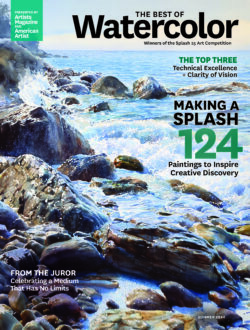

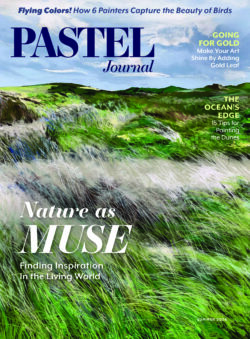
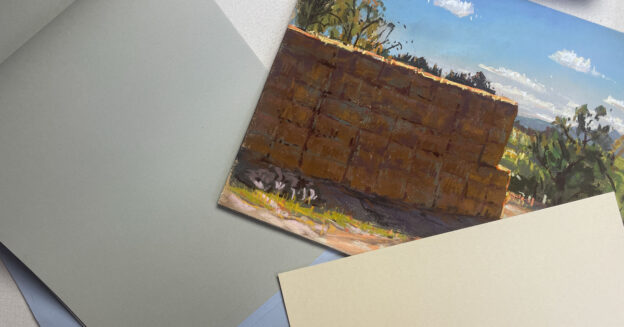


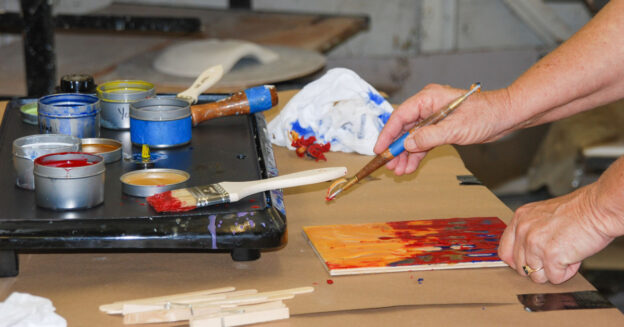



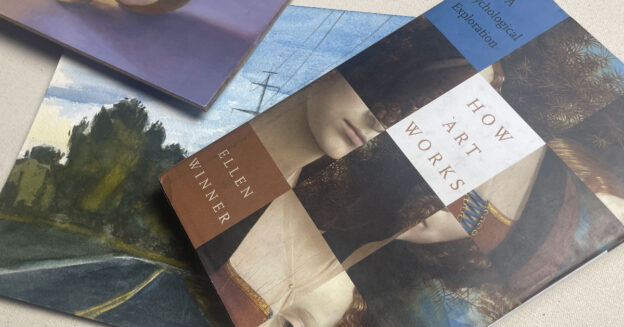
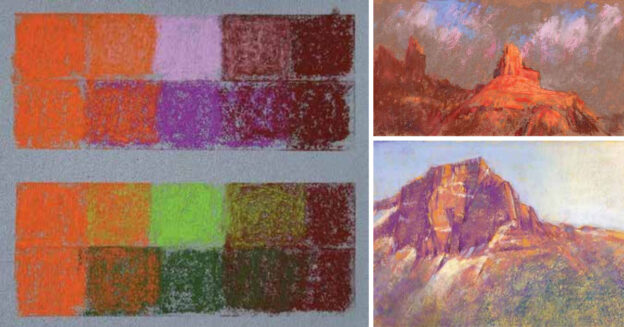


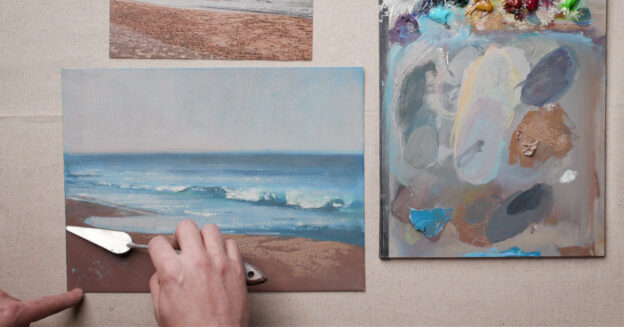




Join the Conversation!